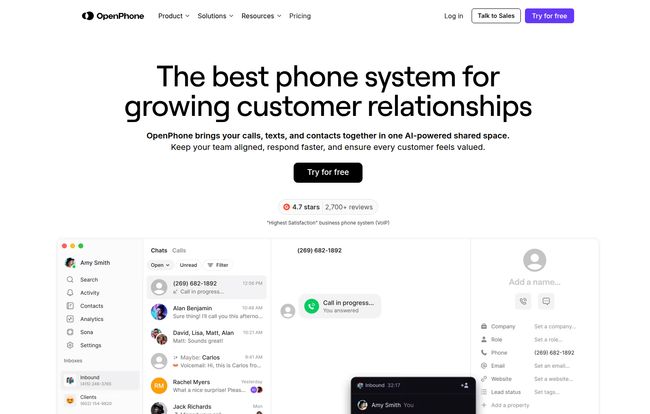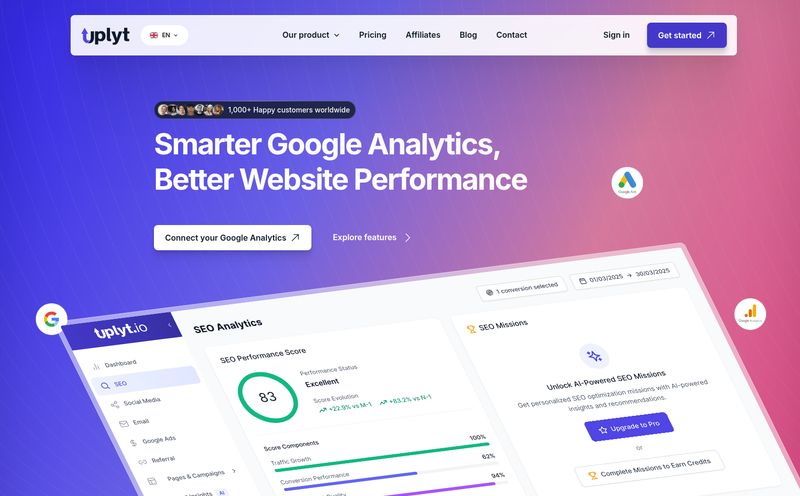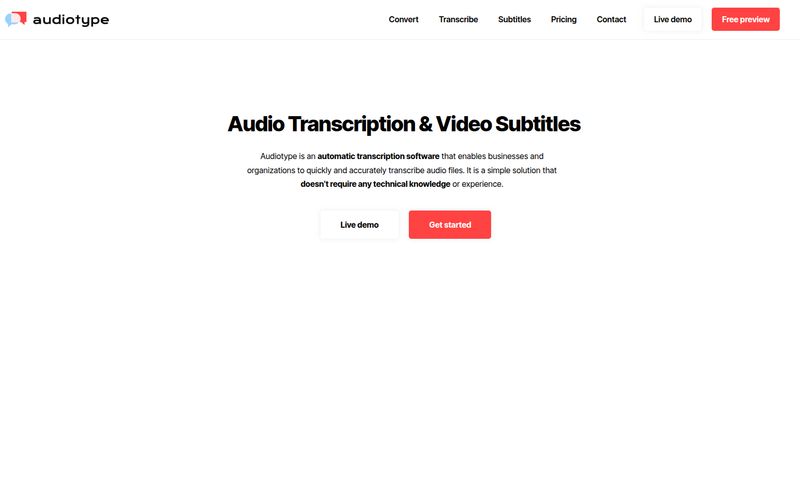Let’s have a little chat. For years, I’ve been navigating the wild world of business communications, and frankly, it’s been a bit of a mess. You either had the clunky, old-school PBX system that felt like it belonged in a museum, or you were stuck giving out your personal cell number. Which, let’s be honest, is a one-way ticket to burnout city. I’ve tried every workaround in the book—Google Voice, burner apps, you name it. They all felt like putting a band-aid on a bullet wound.
Then, tools started popping up promising a “modern solution.” Some were okay, most were just prettier versions of the same old problems. But recently, I’ve been getting my hands on OpenPhone, and I have to say… this one feels different. It’s not just another VoIP service; it feels like someone actually listened to the frustrations of small businesses and startups.
So, is OpenPhone the real deal? Or is it just more of the same hype? I’ve spent some serious time with it, and I’m ready to spill the tea. No fluff, no marketing jargon. Just my honest take as someone who lives and breathes this stuff.
What on Earth is OpenPhone, Anyway?
Alright, let's break it down. At its core, OpenPhone is a business phone system that lives in an app. Simple, right? It works on your smartphone, your tablet, your laptop—wherever you do your work. But calling it just a “phone app” is like calling a Swiss Army knife just a “knife.” It completely misses the point.
Think of it more like a collaborative command center for all your customer communication. It gives you a dedicated business number (or multiple numbers) that you and your team can use to make calls and send texts. All those conversations, contacts, and voicemails are stored in a shared space, so everyone on the team is on the same page. No more “Hey, did you ever call back that client?” texts at 9 PM.

Visit OpenPhone
It’s built for the way we work now. Remote teams, flexible schedules, and a desperate need for efficiency. It’s for the startup that needs to look professional from day one and the small business that wants to finally separate work from life.
The Features That Genuinely Made Me Go “Huh, That’s Smart”
Any platform can give you a phone number. Big deal. The magic is in the details—the little things that save you five minutes here, ten minutes there. And those minutes add up. Here’s what stood out to me.
True Team Collaboration, Not Just Call Forwarding
This is the big one. Most “team” phone solutions are just glorified call forwarding. OpenPhone is different. You get a shared inbox for calls, texts, and voicemails for a specific number. You can see the entire conversation history with a client, no matter which team member spoke to them last. You can even use internal threads and @mentions to discuss a call right there in the app, like a private note. “@Dave, this client needs a quote for the premium package, can you follow up?” It’s seamless. It turns communication from a chaotic mess into an organized, transparent workflow.
The AI Assistant You Didn't Know You Needed
I’m a bit of a skeptic when it comes to AI in some areas, but this is a perfect application. After a call, OpenPhone can automatically generate a summary and a full transcript. I cannot tell you how many times I've ended a long client call and immediately forgotten half of the important details. This feature is a lifesaver. It lets you focus on the conversation instead of frantically scribbling notes. The AI also automatically tags calls, which makes searching for specific conversations later a breeze.
Meet Sona, Your 24/7 AI Receptionist
Okay, now for the cool part. The really cool part. OpenPhone has an AI agent named Sona. Sona can answer calls for you, 24/7. It can answer common questions, collect caller details, and route the call to the right person or department based on what the caller says. It’s not some clunky, robotic phone menu; it's a conversational AI designed to handle the frontline. For a small team, this is huge. It means you never miss a lead, even if it’s 2 AM and everyone’s asleep. Now, Sona is an add-on with its own cost, but the potential ROI from captured leads and improved customer service is seriously intriguing.
Let's Talk Integrations and Custom Workflows
A tool is only as good as how well it plays with others. OpenPhone gets this. It integrates directly with a bunch of popular apps that most of us are already using—think HubSpot, Salesforce, Slack, and of course, Zapier for connecting to pretty much anything else. This means you can do things like automatically log calls and texts in your CRM, or get Slack notifications for missed calls. It’s all about eliminating those tedious manual data entry tasks.
Beyond that, the Call Flow builder is powerful. You can set up custom rules for how incoming calls are handled. Set business hours, create a phone menu (“Press 1 for sales, 2 for support”), set up ring orders to call team members one by one or all at once. It gives you the power of a big-company phone system without needing an IT department to set it up.
The Big Question: OpenPhone Pricing
Alright, let's get down to brass tacks. How much is this going to set you back? Honestly, the pricing is pretty straightforward and, in my opinion, very competitive. They bill per user, which is standard for this kind of service.
| Plan | Price (per user/month) | Who It's For |
|---|---|---|
| Starter | $15 | The essentials. Perfect for solopreneurs or very small teams just getting started. You get a number, calling/messaging, and the basic collaborative features. |
| Business | $23 | The sweet spot, in my view. This unlocks the AI call summaries, CRM integrations, call transfers and more advanced automation. Most growing businesses will land here. |
| Scale | $35 | For teams looking to seriously optimize. You get more advanced AI features, dedicated onboarding, and priority support. |
| Sona Add-On | $49/month | The AI agent. This is an add-on for any plan and includes 50 calls. It's a separate investment for businesses that want that 24/7 coverage. |
The pricing feels fair. It scales with you. You’re not forced into an expensive plan to get one or two critical features, which is a game some other platforms play. And they offer a 7-day free trial, so you can kick the tires before you commit.
The Not-So-Great Stuff (Let's Be Real)
No tool is perfect, and it would be dishonest to pretend OpenPhone is. There are a couple of things to keep in mind.
First, it’s a VoIP service, which means it relies on your internet connection. If your WiFi is spotty, your call quality will be too. That’s not an OpenPhone problem specifically, but a reality of the technology. Second, and this is a big one for any virtual number service, some banks and services are getting picky about using them for two-factor authentication (2FA). I've run into this myself. They sometimes won't send a verification code to a VoIP number. It’s an industry-wide headache, but definitely something to be aware of.
Finally, the fact that Sona, the coolest AI feature, is an additional cost might be a bummer for some. It makes sense given the technology involved, but you just have to factor that into your budget if you want the full AI-powered experience.
So, Who Is OpenPhone Actually For?
After all this, who should sign up tomorrow? In my professional opinion, OpenPhone is a fantastic fit for a few key groups:
- Startups and Small Businesses: This is the bread and butter. It provides a polished, professional communication system without the enterprise price tag or complexity.
- Remote or Hybrid Teams: The collaborative features are a godsend when your team is spread out across the city, country, or even the world.
- Service-Based Businesses: Think real estate agents, consultants, or contractors who need to manage client communications on the go without using their personal number.
- Anyone Tired of the Status Quo: If you're frustrated with your current phone setup and want something that just works in a modern way, give the free trial a shot.
Who might want to look elsewhere? Maybe massive corporations with deeply entrenched, complex legacy systems. Or, if you just need a super-basic second number with zero team features, there might be simpler, less robust options out there.
Frequently Asked Questions
How does OpenPhone work?
It's a VoIP (Voice over Internet Protocol) system. You get a real phone number, but all calls and texts are handled through the OpenPhone app on your devices using your internet connection, rather than a traditional phone line.
What’s the call quality like?
Generally, it's excellent—just as clear as a regular phone call. However, since it runs over the internet, the quality is directly tied to the strength and stability of your WiFi or data connection.
Can I move my existing business number to OpenPhone?
Yes, you can. OpenPhone offers number porting, so you can bring your existing local or toll-free number over to their platform. The process usually takes a few days.
Will my customers see my OpenPhone number when I call?
Absolutely. When you call or text from the OpenPhone app, your customers will see your dedicated OpenPhone business number, not your personal cell number. That's the whole point!
Can I really use it for 2FA codes?
It's a bit of a mixed bag. For many services, yes. But some financial institutions and online platforms are increasingly restricting 2FA codes to non-VoIP numbers. It's best to test it with your critical services or have a backup.
Is there a free trial to test it out?
Yes, there is. OpenPhone offers a 7-day free trial, which I highly recommend. It’s the best way to see if the interface and features are a good fit for you and your team.
My Final Verdict on OpenPhone
Look, the way we communicate for work has fundamentally changed, and our tools need to catch up. OpenPhone is one of the first business phone systems I’ve seen that truly feels like it was built for this new reality. It’s smart, intuitive, and genuinely solves the problems that small, modern teams face.
It elegantly bridges the gap between your personal and professional life, empowers your team to work together seamlessly, and uses AI in ways that actually save time instead of just being a gimmick. While it’s not without its minor flaws—the universal VoIP caveats—it's an incredibly strong contender. For the price, and for the power it puts in your hands, it’s more than just a phone system. It’s a genuine upgrade to how your business communicates.



